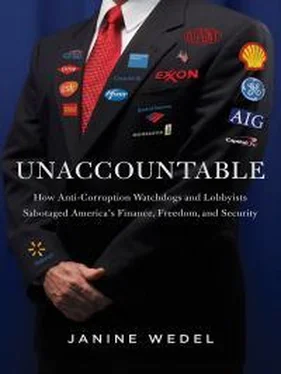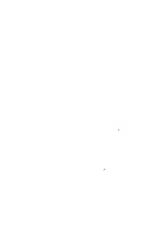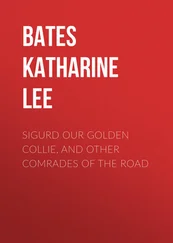74. See: Transparency International, “2008 Corruption Perceptions Index.” Transparency International (http://archive.transparency.org/news_room/in_focus/2008/cpi2008/cpi_2008_table).
See also: Simon Rogers, “Corruption, country by country. The 2009 Transparency International index in full.” The Guardian, November 17, 2009 (http://www.theguardian.com/news/datablog/2009/nov/17/corruption-index-transparency-international); and Phillip Kurata, “Transparency International Issues 1999 Corruption Rankings.” Washington File, October 26, 1999 (https://www.fas.org/irp/news/1999/10/991026-corrupt-usia1.htm).
75. The Goldman Abacus deal, discussed in Chapter 1, took place in 2007.
76. Transparency International, “2008 Corruption Perceptions Index,” Transparency International (http://archive.transparency.org/news_room/in_focus/2008/cpi2008/cpi_2008_table). Transparency International, “2009 Corruption Perceptions Index,” Transparency International (http://www.transparency.org/research/cpi/cpi_2009#results).
77. Roger Boyes, Meltdown Iceland: Lessons on the World Financial Crisis from a Small Bankrupt Island. New York: Bloomsbury USA, 2009, p. 41.
78. See, for instance: European Commission, “Profile on Ireland” (http://ec.europa.eu/ireland/economy/irelands_economic_crisis/index_en.htm).
79. Johann G. Lambsdorff, “Consequences and Causes of Corruption,” Susan Rose-Ackerman, ed., International Handbook on the Economics of Corruption. Cheltenham, U.K.: Edward Elgar, 2006, p. 3.
80. Transparency International, “The Fight Against Corruption: Is the Tide Now Turning?” Transparency International (TI) Annual Report. Berlin, April 1997, pp. 61-63.
81. Simon Rogers, “Corruption, country by country. The 2009 Transparency International index in full.” The Guardian, November 17, 2009 (http://www.theguardian.com/news/datablog/2009/nov/17/corruption-index-transparency-international).
82. Such indices often lack epistemological rigor and are frequently misused. See, for instance, Raymond June, Afroza Chowdhury, Nathaniel Heller, and Jonathan Werve, A Users’ Guide to Measuring Corruption, Marie Laberge and Joachim Nahem, eds. Oslo: UNDP/Global Integrity, June 2008, p. 6; Christiane Arndt and Charles Oman, Uses and Abuses of Governance Indicators . Paris: OECD Development Centre, 2006 (http://www.oecd.org/document/25/0,2340,en_2649_33731_37081881_1_1_1_1,00.html); Michael Johnston, “Measuring Corruption: numbers versus knowledge versus understanding,” Arvind K. Jain, ed., The Political Economy of Corruption. New York: Routledge, 2001, pp. 157-179; and Melissa Thomas, “What Do The Worldwide Governance Indicators Measure?” European Journal of Development Research, vol. 22, no. 1, 2010, pp. 31-54, among others.
This Guardian article discusses some of the perceived drawbacks of the CPI: http://www.theguardian.com/global-development/poverty-matters/2013/dec/03/transparency-international-measure-corruption-valid.
Lambsdorff recognizes “the limitations of perception-based indices . . .”, adding that “. . . researchers have nevertheless been able to use them to significantly advance the study of corruption.” Johann G. Lambsdorff, “Consequences and Causes of Corruption.” International Handbook on the Economics of Corruption, Susan Rose-Ackerman, ed. Cheltenham, U.K.: Edward Elgar, 2006, p. 3.
For an analysis of the most common methods of measuring corruption, see Eric M. Uslaner, Corruption, Inequality, and the Rule of Law : The Bulging Pocket Makes the Easy Life . Cambridge: Cambridge University Press, 2008, pp. 11-17.
83. Ivan Krastev, Shifting Obsessions: Three Essays on the Politics of Anticorruption . Budapest: Central European University Press, 2004, pp. 48-49. For further analysis and critique, see Kalin S. Ivanov’s article on “The Limits of a Global Campaign Against Corruption.” Corruption and Development: The Anti-Corruption Campaigns , Sarah Bracking, ed. New York: Palgrave Macmillan, 2007, pp. 32-33.
84. Ivanov, op. cit., p. 33.
85. For the quote from TI, see: Transparency International, “1998 Corruption Perceptions Index.” Press release, September 21, 1998 (http://archive.transparency.org/news_room/latest_news/press_releases/1998/1998_09_22_cpi).
With regard to aid agencies telling countries that they need to improve their TI (or similar) scores to qualify for assistance, see the following information and sources.
The U.S. Millennium Challenge Corporation currently uses the World Bank’s Worldwide Governance Indicators as one of the indicators to determine a country’s eligibility for funds (see: http://www.mcc.gov/pages/selection/indicator/control-of-corruption-indicator).
Hans Krause Hansen writes: “Over the years corruption perception indices of various sorts have been widely publicized in global media and shaped decisionmaking processes concerning significant financial and political matters, including the investment decisions of corporations and the allocation of development aid by government agencies” (Arndt and Oman, 2006) [Christiane Arndt and Charles Oman, Uses and Abuses of Governance Indicators . Paris: OECD Development Centre, 2006 {http://www.oecd.org/document/25/0,2340,en_2649_33731_37081881_1_1_1_1,00.html}]. They have also spurred many controversies amongst experts and triggered protests from lower ranking countries finding themselves trapped in processes of ‘naming and shaming’ (e.g., Löwenheim, 2008:261). Similar to other rankings and forms of benchmarking, such indices seem [to] have taken a life on their own. Even contestation of their adequacy or appropriateness somehow bolsters their materiality (Larner and Le Heron, 2004)” (Hans Krause Hansen, “Corruption and Risks: Managing Corruption Risks,” Review of International Political Economy, vol. 18, no. 2, May 2011, p. 260).
86. See this article by Lambsdorff for prominent indices used by corruption researchers. Johann G. Lambsdorff, “Consequences and Causes of Corruption,” Susan Rose-Ackerman, ed., International Handbook on the Economics of Corruption. Cheltenham, U.K.: Edward Elgar, 2006, p. 3.
Playing a part in corruption indices are prespecified variables, such as the nine corruption variables named by Susan Rose-Ackerman (Susan Rose-Ackerman, Corruption and Government: Causes, Consequences, and Reform . New York: Cambridge University Press, 1999, p. xi; Susan Rose-Ackerman, ed., International Handbook on the Economics of Corruption . Cheltenham, U.K./Northampton, MA: Edward Elgar, 2006); and Johann G. Lambsdorff (Johann G. Lambsdorff, “Consequences and Causes of Corruption,” International Handbook on the Economics of Corruption, Susan Rose-Ackerman, ed. Cheltenham, U.K.: Edward Elgar, 2006, p. 4). Most of the variables specified by these authors are identical, including the size of the public sector, the quality of regulation, the degree of economic competition, the structure of government, the amount of decentralization, and the impact of cultures.
The use of metrics as analysis in cross-country studies bred a body of corruption literature, some of it with rather sweeping conclusions. Although economists did not abandon their earlier (Cold War–era) focus on modeling hypothetical transactions, the economics of corruption largely turned to employing indices and large data sets—data purportedly comparable across countries—to make their arguments. Political scientist Michael Johnston writes that “[m]uch recent work has been cross-sectional, often applying statistical measures and models to large numbers of countries to account for their scores on various single-dimension corruption indices” (Michael Johnston, Syndromes of Corruption: Wealth, Power, and Democracy. New York: Cambridge University Press, 2005, p. 4). Especially popular have been correlative studies, containing varying degrees of persuasive evidence regarding causality. We have learned, for instance, that corruption is:
Читать дальше












